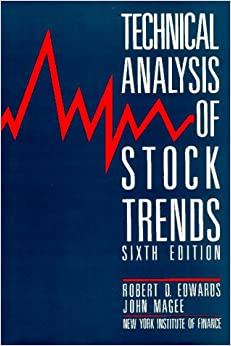

a See details for each of the costs of financing from section 10-3, 10-4, 10-5, and 10-6 Here is a concept dip Cengage Concept Clip Link When a firm uses debt financing it needs to find the cost of this source A. The cost of equity can be the cost of retained earnings or the cost of new When debt is used the interest on that debt is a cost for the firm. So how common stock do we measure the anticipated interest payment on new debt? When you see cost of common equity" or "cost of equity know that there are It is approximated with which variable? three methods for approximating this value. What are the three ways to When a firm uses preferred stock financing it needs to find the cost of this measure cost of equity source. Investors will not be willing to invest in the firm or project unless 8. The Yield to Maturity (WY) on current or recent outstanding bonds (this is from their required return threshold is met. For example, I would not invest in Chapter 8) any stock if I thought there was a good chance that I would lose money So how can we measure the required return of investors on preferred C. The cost of new equity Issuance (issuing now stock) is higher than the cost of stock? equity from retained earnings. This means when flotation cost is considered the () should be larger than equity from retained damings CAPM approach in 10-5A- this method uses beta (see chapter 8 for a refresher of the CAPM) D. Dividend (D) / Price (P) (this is from Chapter 9) v Bond Yield+ Risk Premium Approach This method uses a Risk Premium that represents the additional required return from investing in stocks over bonds- In this method the Bond Risk Premium is given in the problem set- up. The Bond Yield can be found as the yield to maturity on the firm's debt (WY) Investors require more return for Investing in stocks over bonds because common stocholders are behind bondholders and bankruptcy claimants This Risk Premium is different than the Market Risk Premium used In the CAPM Remember the Market Risk Premium is the the extra In this method the Bond Risk Premium is given in the problem set- up. The Bond Yield can be found as the yield to maturity on the firm's debt (WY) Investors require more return for investing in stocks over bonds because common stocholders are behind bondholders and bankruptcy claimants This Risk Premium is different than the "Market Risk Premium" used in the CAPM Remember the Market Risk Premium is the the extra required return from investing in the market over the risk free rato The Discounted Cash Flow (DCF) approach uses the valuation model from Chapter 9 where now we solve for (0) This appoximation method uses dividends Be careful that the Upcoming Dividend is used in the formula Investors consider future cash flows in these models So be careful in using dividends in this formula D1 =DO "(1+9) where g is in decimal form The cost of NEW common equity considers the cost of new issuance in its approximation These are called flotation costs and can be significant In this class flotation cost will be provided as a percentage and will only be used with the DCF method . The steps for considering this added cost to using equity is in section 10-6b of the book . One of the cengage homework questions instructs you to calculate the cost of equity with and without flotaiton costs just as in section 10.66 Match this to the statement that is true when we consider flotation cost








